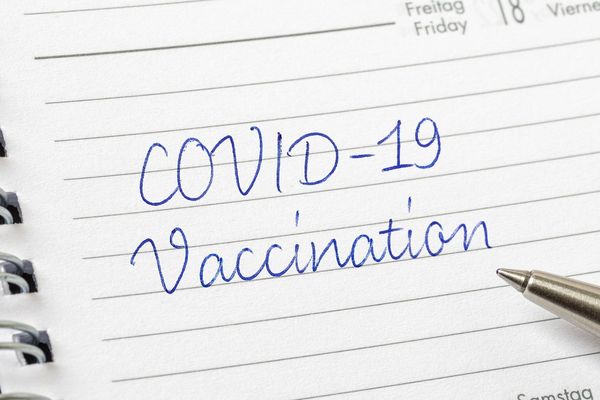By Stacy Morford, The Conversation
Scientists have been warning for months that the coronavirus could be spread by aerosols – tiny respiratory droplets that people emit when they talk or sneeze and that can linger in the air.
The Centers for Disease Control and Prevention appeared to acknowledge that risk on Sept. 18. It posted guidance on its website listing aerosols among the ways the virus spreads and saying there was growing evidence the airborne particles can remain suspended and travel beyond 6 feet. But three days later, that guidance was gone. A note in its place said a draft had been posted in error and that the CDC was still working on the update.
That kind of shifting by the government can be confusing. In the following five articles recently published in The Conversation, we turned to scientists to help explain what aerosols are, how airborne particles can transmit the coronavirus and how to protect yourself.
1. What you need to know about aerosols
When you talk or sing, the rush of air breaks up strands of mucus in your airways, sending droplets of it airborne.
While larger droplets quickly fall, tiny, light ones can linger in the air. If you're infected, those droplets can contain the coronavirus, and early research suggests it can be viable for many minutes to hours.
Aerosol experts Byron Erath, Andrea Ferro and Goodarz Ahmadi of Clarkson University explained the mechanics of aerosols in a recent article for The Conversation.
They also discussed what people can do to protect themselves. “Wearing face coverings to decrease airborne exposure risk is critical," they wrote, and “reducing the amount of time you spend in poorly ventilated, crowded areas is a good way to reduce airborne exposure risk."
2. Is staying 6 feet apart enough?
The common advice for social distancing is to stay 6 feet apart. It's easy to remember, but it doesn't account for all aerosol risks – particularly indoors.
Because people infected with SARS-CoV-2 can transmit large amounts of the virus, there is no safe distance in a poorly ventilated room, Erath, Ferro, Ahmadi and their Clarkson University colleague Suresh Dhaniyala wrote in a second article. Air currents from a fan or ventilation system can spread respiratory droplets farther than 6 feet. So can speaking loudly or singing, as superspreader events have shown.
The scientists used a smoky room analogy to illustrate the risk and suggested ways to manage it.
“Over time, it won't matter where you are in the room," they wrote. “While it's not a perfect analogy, picturing how cigarette smoke moves through different environments, both indoors and outdoors, can help in visualizing how virus-laden droplets circulate in the air."
3. Airborne particles and superspreaders
A large number of COVID-19 cases have come from “superspreader" events where someone who is highly infectious spreads the virus to dozens of others.
Researchers in Hong Kong recently estimated that about 20% of the people infected there were responsible for 80% of the local coronavirus transmission. Choir practices, church services, nightclubs and a birthday party are just few of the documented superspreader events.
Elizabeth McGraw, who heads Pennsylvania State University's Center for Infectious Disease Dynamics, explained the evidence and the importance of superspreader events to the virus's transmission in another article.
“The good news is that the right control practices specific to how pathogens are transmitted – hand-washing, masks, quarantine, vaccination, reducing social contacts and so on – can slow the transmission rate and halt a pandemic," she wrote.
4. What airborne virus means for reopening
The way the virus spreads in the air is also a challenge for reopening businesses and schools.
Respiratory scientist Douglas Reed of the University of Pittsburgh examined studies that have shown how the virus has spread, including at a call center in South Korea, a restaurant in China and a choir practice in Washington state.
“The evidence strongly suggests that airborne transmission happens easily and is likely a significant driver of this pandemic. It must be taken seriously as people begin to venture back out into the world," he wrote.
More research has been published since that article came out that also points to the virus spreading through the air. One review found adults who had tested positive for COVID-19 were about twice as likely to have dined at a restaurant than those who tested negative. Another described a large outbreak in one ward of a nursing home with poor ventilation. Two other studies traced how the virus spread during airline flights.
A separate article by Kacey Ernst and Paloma Beamer of the University of Arizona looked at the risks in flying during the pandemic and, for those who must get on an airplane, how to stay as safe as possible.
5. The problem with school buses
With temperatures getting cooler, it's going to be harder to keep windows open to bring fresh air into enclosed spaces, and that includes public transportation and school buses.
Jesse Capecelatro, a mechanical engineer at the University of Michigan, broke down the risks of the coronavirus spreading inside a school bus and offered eight recommendations.
“Short trips. Masks for everyone. Far fewer passengers than before," he wrote. “Those are my top recommendations for how America's school buses should take kids to and from school during the pandemic."
Editor's note: This story is a roundup of articles from The Conversation's archives.![]()
Stacy Morford, General Assignments Editor, The Conversation
This article is republished from The Conversation under a Creative Commons license. Read the original article.







